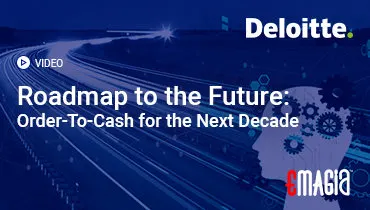In the dynamic world of business, cash flow is often described as the lifeblood of an organization. Without a clear and accurate understanding of incoming and outgoing funds, even profitable companies can face liquidity crises. While traditional financial planning often relies on monthly or weekly cash forecasts, the speed of modern commerce demands a more granular and immediate perspective. This is where the ability to generate daily cash forecasts automatically becomes not just an advantage, but a strategic imperative.
For too long, finance teams have grappled with the laborious, error-prone, and time-consuming process of manually compiling cash flow projections. Gathering data from disparate systems, reconciling bank statements, and making educated guesses about future inflows and outflows often leaves decision-makers with outdated or unreliable information. This reactive approach can lead to missed opportunities, suboptimal investment decisions, and increased financial risk.
However, a significant shift is underway. Advances in financial technology, particularly in automation, artificial intelligence, and machine learning, are empowering businesses to transform their cash forecasting capabilities. By embracing automated solutions, organizations can gain real-time visibility into their liquidity, make proactive decisions, and navigate economic uncertainties with greater confidence. This comprehensive guide will explore the critical need for daily cash flow prediction, delve into the mechanics of automated forecasting, highlight its transformative benefits, and outline how businesses can effectively implement strategies to generate daily cash forecasts automatically, ushering in a new era of financial agility.
The Critical Need for Daily Cash Flow Prediction
While long-term financial planning is essential, the day-to-day management of cash requires a much finer lens. Daily cash forecasting provides the precision needed for optimal liquidity management.
What is Daily Cash Forecasting?
Daily cash forecasting involves projecting a company’s cash inflows and outflows on a day-by-day basis over a short-term horizon, typically a few days to a few weeks. It provides a granular view of the expected cash position, allowing treasury and finance teams to anticipate surpluses or deficits with high accuracy. This level of detail is crucial for effective liquidity management and for making informed, real-time financial decisions.
Why Daily is Different: Beyond Monthly or Weekly Projections
Traditional monthly or weekly cash forecasts, while useful for broader planning, often lack the granularity needed for immediate operational decisions. Daily projections offer:
- Real-time Visibility: A snapshot of cash balances at the start and end of each day, enabling immediate action.
- Enhanced Liquidity Management: Ability to precisely manage short-term cash positions, optimizing investments or securing short-term borrowing when needed.
- Proactive Problem Solving: Early detection of potential cash shortfalls or unexpected surpluses, allowing for timely intervention.
- Operational Agility: Supporting quick decisions on payments, investments, and debt management based on the most current data.
This granular insight is what truly differentiates daily cash flow prediction from broader financial outlooks.
The Perils of Manual Cash Flow Projections
Relying on manual processes for daily cash forecasting is fraught with challenges that can undermine financial stability:
- Time-Consuming and Labor-Intensive: Gathering data from disparate sources (bank statements, ERPs, AR, AP ledgers) and manually compiling spreadsheets consumes significant finance team hours daily.
- Prone to Human Error: Manual data entry, reconciliation, and formula errors can lead to inaccurate forecasts, resulting in poor decisions.
- Lack of Real-time Insights: By the time a manual forecast is compiled, the underlying data may already be outdated, making the projection less relevant for immediate action.
- Reactive Decision-Making: Without accurate, timely forecasts, businesses are forced to react to cash flow events rather than proactively manage them, leading to suboptimal outcomes.
- Limited Scenario Planning: Manual models make it difficult to quickly run “what-if” scenarios to assess the impact of various business events.
These limitations highlight the urgent need to automate cash flow prediction.
Understanding Automated Cash Flow Prediction Solutions
Automated cash forecasting solutions leverage technology to collect, process, and analyze financial data, providing accurate and timely cash flow projections with minimal manual intervention.
What is Automated Cash Forecasting?
Automated cash forecasting refers to the use of specialized software and technological tools to systematically collect, analyze, and project a company’s future cash inflows and outflows. It moves beyond traditional spreadsheet-based methods by integrating data from various sources, applying advanced algorithms, and often utilizing artificial intelligence and machine learning to generate highly accurate and dynamic cash flow predictions. The goal is to provide finance professionals with a reliable, real-time view of their liquidity position.
Key Components of an Automated Forecasting System
Effective automated cash flow prediction relies on several interconnected components:
- Comprehensive Data Integration: The ability to seamlessly connect and pull data from all relevant financial systems, including Enterprise Resource Planning (ERP) systems (e.g., SAP, Oracle), Treasury Management Systems (TMS), bank accounts, Accounts Receivable (AR) modules, Accounts Payable (AP) modules, and even sales and operational data.
- Advanced Analytics & Algorithms: Sophisticated mathematical models and algorithms that analyze historical cash flow patterns, identify trends, and project future movements. These algorithms can account for seasonality, recurring payments, and other predictable events.
- Machine Learning & AI Capabilities: Crucial for enhancing accuracy. ML algorithms can learn from past data, identify subtle patterns, detect anomalies, and continuously refine forecasting models over time. AI can even predict customer payment behavior or supplier payment patterns with greater precision. This is the core of intelligent cash flow prediction.
- Scenario Planning & What-If Analysis: Tools that allow finance teams to quickly model the impact of various hypothetical scenarios (e.g., delayed large payment, unexpected expense, sudden sales surge) on future cash positions.
- Intuitive Reporting & Visualization Tools: Dashboards and reports that present complex cash flow data in an easy-to-understand format, enabling quick insights and informed decision-making for all stakeholders.
These components work in synergy to provide a holistic and dynamic view of a company’s cash position.
How to Generate Daily Cash Forecasts Automatically: The Practical Process
Implementing automated cash forecasting involves a structured approach that transforms raw financial data into actionable insights.
Step 1: Data Aggregation and Seamless Integration
The foundation of accurate automated forecasting is comprehensive and reliable data. The first step involves connecting all relevant data sources:
- Bank Feeds: Direct, secure connections to bank accounts to pull real-time balance information and transaction data.
- ERP/Accounting Systems: Integration with AR and AP modules to capture expected inflows (invoices due) and outflows (bills to pay).
- Treasury Management Systems: If applicable, integration for investment and debt service data.
- Other Operational Data: Incorporating data from sales pipelines, procurement systems, or even weather patterns (for certain industries) that might influence cash flows.
Automated solutions excel at consolidating this diverse data, eliminating manual data entry and ensuring data integrity.
Step 2: Intelligent Data Processing and Cleansing
Once aggregated, the raw data needs to be processed and cleansed. Automated systems perform:
- Automated Classification: Categorizing transactions (e.g., payroll, vendor payments, customer receipts) based on rules and historical patterns.
- Data Validation: Checking for completeness and accuracy, flagging any anomalies or discrepancies for review.
- Normalization: Standardizing data formats from different sources for consistent analysis.
This automated preparation ensures that the data fed into the forecasting models is clean and reliable.
Step 3: Predictive Modeling and Algorithm Application
This is where the actual forecasting takes place. The system applies advanced algorithms and machine learning models to the processed data:
- Historical Analysis: Identifying recurring patterns, seasonality, and trends in cash inflows and outflows.
- Statistical Models: Using regression, time-series analysis, and other statistical methods to project future cash movements.
- Machine Learning for Behavioral Prediction: AI models can learn from past payment behaviors of customers (e.g., average Days Sales Outstanding – DSO) and suppliers (e.g., typical payment terms taken) to predict the exact timing of future cash receipts and disbursements with higher accuracy.
- Event-Based Forecasting: Incorporating known future events like large capital expenditures, debt repayments, or major sales campaigns into the forecast.
The output is a detailed, day-by-day projection of cash balances.
Step 4: Scenario Analysis and Human Oversight
While automation provides the core forecast, human intelligence remains crucial for strategic input:
- “What-If” Scenarios: Finance teams can use the automated model to quickly run various scenarios (e.g., impact of a customer delaying a large payment, effect of an early supplier payment discount).
- Strategic Adjustments: Incorporating qualitative insights, market intelligence, and strategic decisions that cannot be captured by historical data alone.
- Variance Analysis: Comparing actual cash flows against forecasted amounts to identify deviations and refine future models.
This collaborative approach ensures the forecast is both data-driven and strategically sound.
Step 5: Real-time Reporting and Actionable Alerts
The final step is to present the forecast in an accessible and actionable manner:
- Interactive Dashboards: Providing a real-time, visual overview of current and projected cash positions.
- Automated Alerts: Notifying finance teams of potential cash shortfalls, unexpected surpluses, or significant deviations from the forecast, enabling immediate intervention.
- Customizable Reports: Generating detailed reports for various stakeholders, supporting different levels of financial analysis.
This ensures that insights from the automated cash flow prediction are readily available for informed decision-making.
Transformative Benefits of Automated Daily Cash Flow Prediction
The shift to automated daily cash forecasting offers profound advantages that extend across the entire organization, enhancing financial health and strategic agility.
1. Enhanced Liquidity Management
With precise daily insights, businesses can optimize their cash utilization. This means:
- Optimal Investment: Identifying surplus cash available for short-term investments, maximizing returns.
- Minimized Borrowing Costs: Anticipating deficits allows for proactive, cheaper short-term borrowing, avoiding expensive emergency loans.
- Reduced Idle Cash: Ensuring cash is working efficiently rather than sitting unproductive in bank accounts.
2. Reduced Financial Risk
Automated forecasting acts as an early warning system, significantly mitigating financial risks:
- Proactive Shortfall Identification: Spotting potential cash shortages days or weeks in advance, allowing time to arrange funding.
- Fraud Detection: Anomalies in cash flows, flagged by the system, can sometimes indicate fraudulent activities.
- Improved Compliance: Better tracking and reporting aid in regulatory compliance related to liquidity.
3. Improved Operational Efficiency
Automation frees finance teams from tedious, manual tasks:
- Significant Time Savings: Hours previously spent on data gathering and spreadsheet manipulation can be redirected to higher-value activities like strategic analysis, negotiation, or dispute resolution.
- Reduced Human Error: Automated processes drastically minimize the risk of costly mistakes in data entry and calculations.
- Faster Financial Close: Streamlined reconciliation and accurate forecasts contribute to a quicker and more efficient financial close process.
4. Better Strategic Decision-Making
Accurate, real-time cash flow predictions empower leadership with superior insights for strategic planning:
- Informed Investment Decisions: Confidence in cash availability supports timely capital expenditures or acquisitions.
- Optimized Debt Management: Better understanding of cash positions allows for more effective debt repayment strategies or refinancing opportunities.
- Enhanced Budgeting and Planning: More reliable forecasts lead to more realistic budgets and operational plans.
5. Increased Accuracy and Reliability
Leveraging AI and machine learning, automated systems achieve a level of precision unattainable through manual methods. They can identify complex patterns and correlations that human analysts might miss, leading to more dependable forecasts.
6. Scalability for Growth
As a business grows, the volume and complexity of its financial transactions increase exponentially. Automated forecasting solutions can easily scale to handle this increased data, ensuring that financial insights remain accurate and timely without a proportional increase in manual effort or headcount.
Overcoming Challenges in Adopting Automated Cash Flow Projections
While the benefits are clear, implementing automated cash forecasting is a significant undertaking that comes with its own set of challenges.
1. Data Silos and Integration Complexities
Many organizations operate with disparate systems that don’t communicate effectively. Integrating ERPs, TMS, banking platforms, and other financial modules can be complex and require significant IT resources. Ensuring data consistency and quality across these varied sources is a foundational hurdle.
2. Resistance to Change and Skill Gaps
Finance teams accustomed to manual processes may resist new technologies. There can also be a skill gap in understanding and utilizing advanced analytics, AI, and machine learning tools. Effective change management and comprehensive training are crucial for successful adoption.
3. Choosing the Right Technology Partner
The market offers a wide array of cash forecasting solutions. Selecting the right vendor that aligns with a company’s specific needs, existing infrastructure, and future growth plans requires careful evaluation and due diligence. Factors like integration capabilities, scalability, AI sophistication, and customer support are paramount.
4. Ensuring Data Quality and Governance
Automated forecasting is only as good as the data it consumes. Poor data quality (inaccurate, incomplete, or inconsistent data) will lead to flawed forecasts. Establishing robust data governance policies and continuous data cleansing processes is essential to maintain the integrity and reliability of the projections.
Emagia: Revolutionizing Cash Forecasting with AI-Powered Intelligence
For enterprises striving to achieve unparalleled financial agility and precision in their liquidity management, Emagia offers a transformative, AI-powered solution that directly addresses the complexities of generating daily cash forecasts automatically. Emagia’s Autonomous Finance platform moves beyond traditional forecasting tools, providing a comprehensive and intelligent approach to predicting cash flows with remarkable accuracy.
Emagia’s Intelligent Cash Forecasting leverages cutting-edge Artificial Intelligence and Machine Learning to ingest and analyze vast amounts of disparate financial data from across the enterprise – including bank statements, Accounts Receivable (AR) data, Accounts Payable (AP) data, sales forecasts, and even external market indicators. Its sophisticated AI algorithms learn from historical patterns, identify subtle trends, and predict future cash inflows (like customer payments) and outflows (like vendor payments or payroll) with high precision, even accounting for behavioral nuances like typical Days Sales Outstanding (DSO) or payment terms. This eliminates the manual effort and inherent inaccuracies of spreadsheet-based forecasting, enabling businesses to generate daily cash forecasts automatically and reliably.
Furthermore, Emagia provides dynamic scenario planning capabilities, allowing finance teams to instantly model the impact of various “what-if” situations on their projected cash position. Real-time dashboards offer granular visibility into current and future liquidity, while proactive alerts notify treasury professionals of potential shortfalls or surpluses, empowering them to make immediate, informed decisions on investments, debt management, or operational adjustments. By transforming cash forecasting from a reactive, labor-intensive task into a proactive, intelligent, and autonomous process, Emagia empowers enterprises to optimize their working capital, mitigate financial risks, and achieve true financial agility in an unpredictable economic landscape.
Frequently Asked Questions (FAQs) About Generating Daily Cash Forecasts Automatically
Why is it important to generate daily cash forecasts automatically?
Automating daily cash forecasts provides real-time visibility into liquidity, enables proactive decision-making, reduces financial risk by identifying potential shortfalls early, and frees up finance teams from time-consuming manual tasks. It’s crucial for optimal working capital management.
What data sources are needed for automated cash flow prediction?
Automated cash flow prediction typically integrates data from various sources, including bank accounts (for actual balances and transactions), ERP systems (for AR and AP data), Treasury Management Systems, sales pipelines, and sometimes even external market data or operational metrics.
How does AI help in automated cash forecasting?
AI and Machine Learning enhance automated cash forecasting by learning from historical patterns, identifying complex trends, and predicting future cash inflows and outflows with greater accuracy. AI can even forecast customer payment behavior or supplier payment timing, improving the reliability of cash flow projections.
What are the main benefits of using automated remittance processing software for cash forecasting?
While “remittance processing software” specifically handles incoming payments, its automation contributes to better cash forecasting by ensuring payment data is accurate and applied quickly. This provides cleaner, more reliable data for the forecasting system, improving the overall accuracy of cash flow predictions.
Can automated cash forecasting replace human judgment?
No, automated cash forecasting tools are designed to augment, not replace, human judgment. They handle the data aggregation and initial projection, freeing up finance professionals to focus on strategic analysis, scenario planning, and incorporating qualitative insights that machines cannot capture, leading to more robust forecasts.
What are the challenges in implementing automated cash flow prediction?
Common challenges include integrating data from disparate systems (data silos), ensuring high data quality, potential resistance to change from finance teams, and selecting the right technology vendor. Overcoming these requires careful planning, robust integration strategies, and effective change management.
How does automated cash forecasting impact Days Sales Outstanding (DSO)?
While automated cash forecasting primarily predicts cash flow, it often works in conjunction with automated cash application and collections tools. By providing better visibility into expected payments and enabling more proactive collections, it indirectly helps in reducing Days Sales Outstanding (DSO) by accelerating the conversion of receivables into cash.
Conclusion: The Future of Finance is Automated and Agile
In an economic landscape defined by constant change and increasing complexity, the ability to generate daily cash forecasts automatically is no longer a futuristic concept but a present-day necessity for any forward-thinking enterprise. The shift from manual, reactive processes to automated, intelligent cash flow prediction represents a fundamental transformation in financial management.
By harnessing the power of data integration, advanced analytics, and artificial intelligence, businesses can gain unprecedented real-time visibility into their liquidity, enabling them to make more informed decisions, mitigate financial risks, and optimize working capital utilization. This not only frees up valuable finance team resources from tedious tasks but also empowers strategic growth and resilience in the face of uncertainty. Embracing automated cash forecasting is not just an operational upgrade; it’s a strategic investment in financial agility, positioning organizations to thrive in the digital age and build a truly intelligent and responsive finance function.


